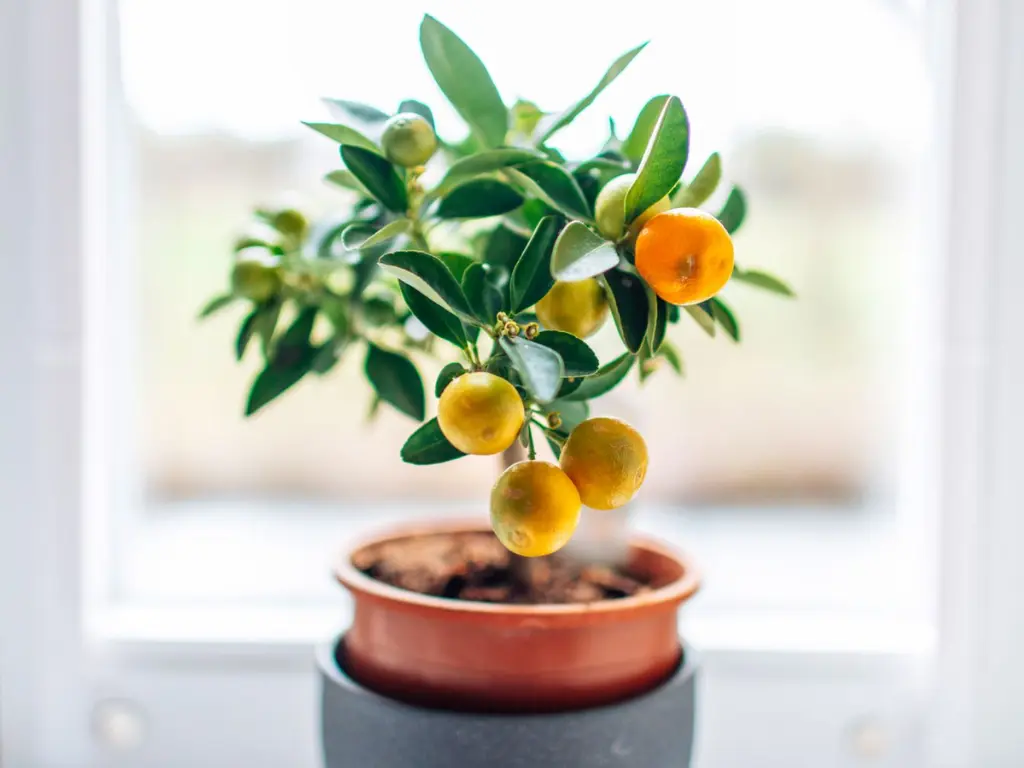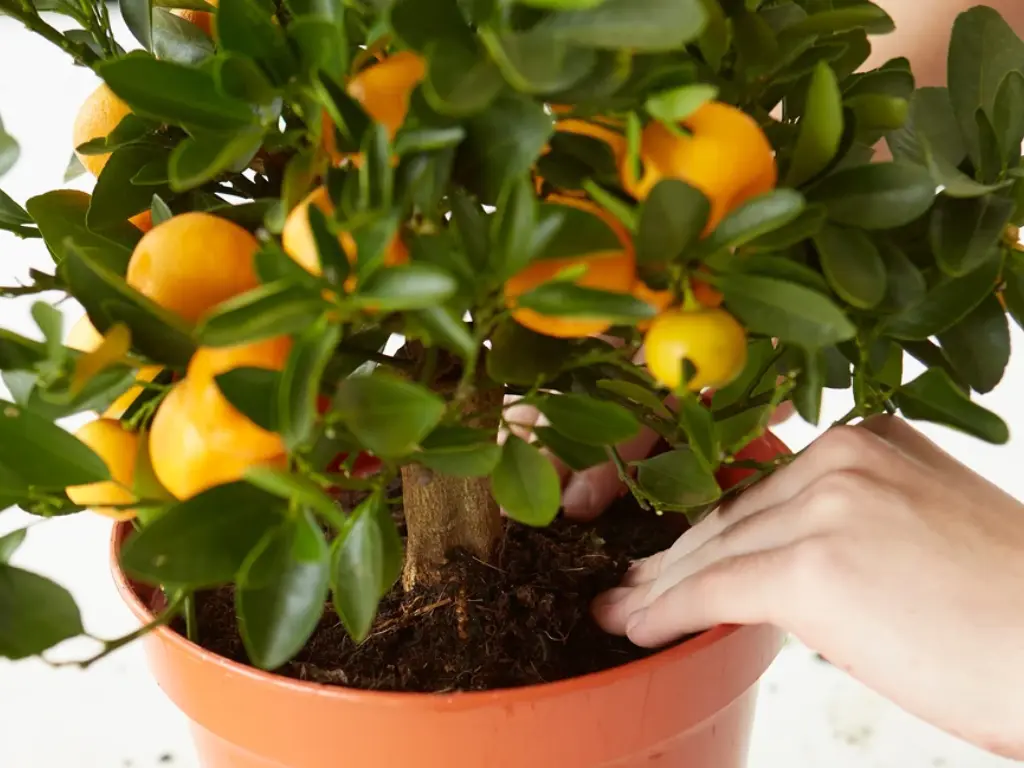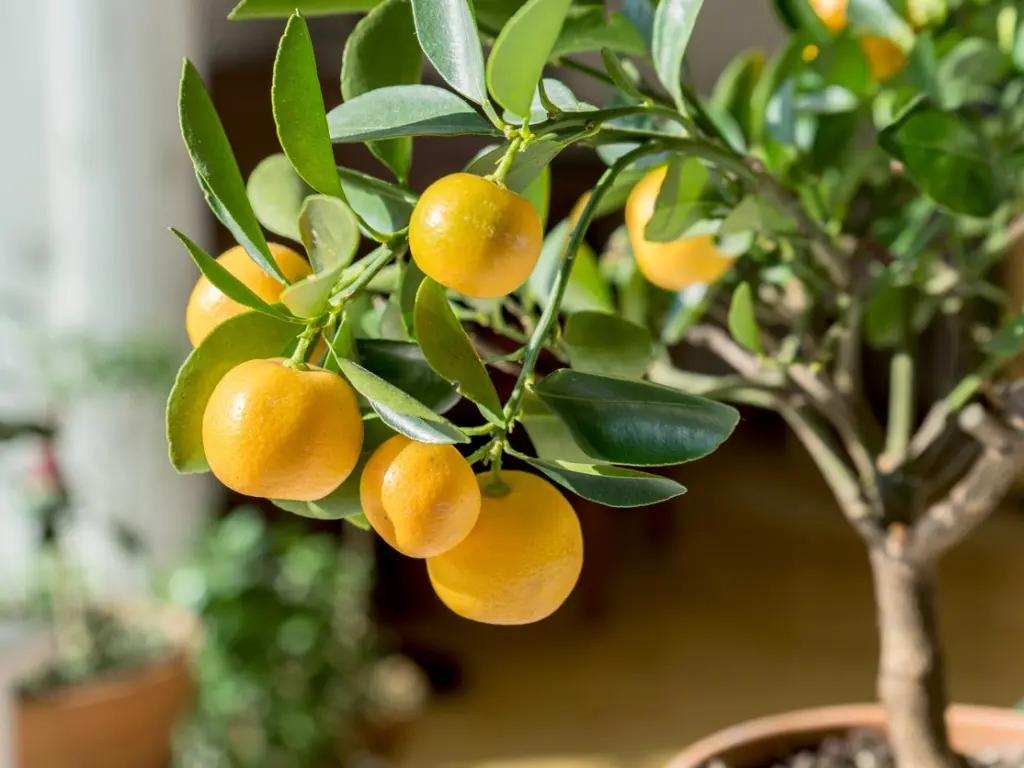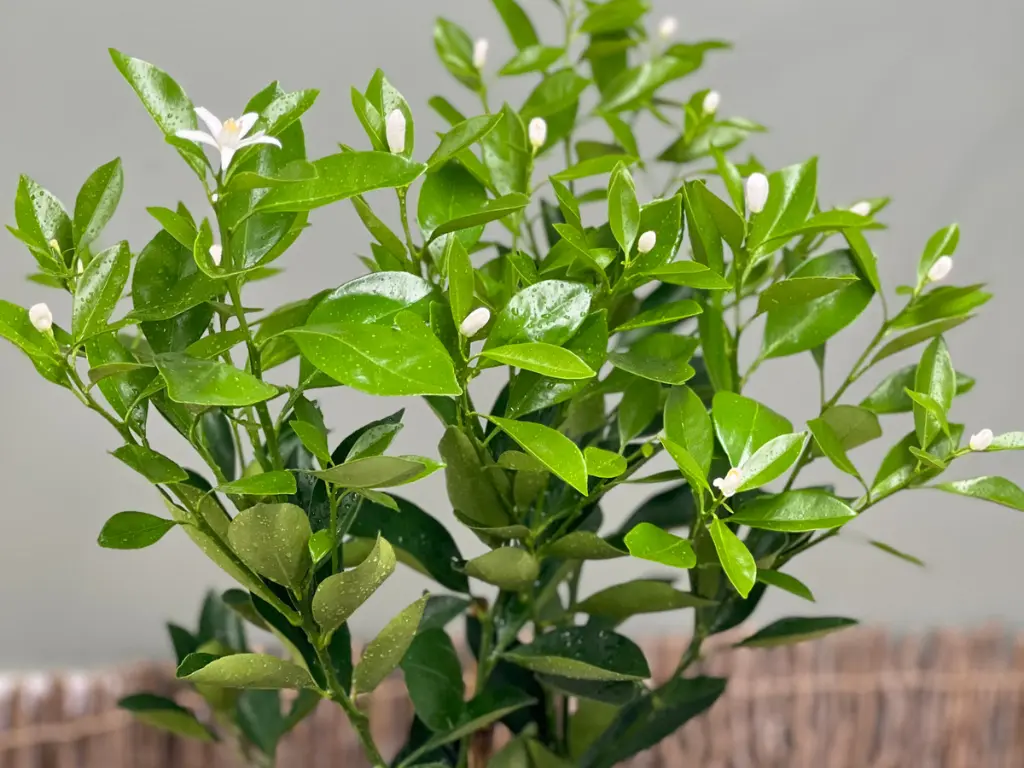Blog
How to Grow Calamondin Indoors: Easy Care Tips for Healthy Container Plants
Have you ever wanted to enjoy fresh citrus right at home, but don’t have the outdoor space for a big tree? That’s where calamondin comes in—it’s a small, charming citrus tree perfect for growing indoors in containers.
Growing calamondin indoors isn’t just about having pretty greenery; it’s about filling your home with the bright scent of citrus blossoms and enjoying tangy little fruits you can use in cooking, drinks, or even homemade cleaners!
If you’re worried about tricky care routines or whether a citrus tree can actually thrive inside, I’m here to tell you: with the right setup, it is surprisingly easy to grow calamondin indoors. Plus, container gardening means you have total control over the soil, water, and light your plant gets, making it perfect for anyone living in apartments, condos, or places with limited outdoor space.
Calamondin (Citrus × microcarpa) is actually a natural hybrid between a kumquat and a mandarin orange. Also known as calamansi lime, Philippine lime, or miniature orange tree, this dwarf citrus variety produces small, orange-red fruits with an edible rind and a distinctive sweet-tart flavor.
Unlike many other citrus varieties, calamondin trees are surprisingly adaptable to indoor conditions. They’re more cold-hardy than most citrus, can tolerate lower light levels (though they still need plenty), and naturally stay compact enough for container growing.
Why Grow Calamondin in Containers?

Why should you consider adding a calamondin to your indoor garden? Here are some compelling reasons:
-
You can grow citrus regardless of your climate zone
-
Their compact size (typically 3-4 feet tall in containers) fits well in homes
-
They produce fruit year-round when properly cared for
-
The white flowers create a heavenly fragrance
-
The ornamental value is stunning with dark green leaves and bright orange fruits
-
They’re more forgiving than other indoor citrus varieties
I’ve found that my calamondin tree becomes a conversation starter whenever guests visit. There’s something magical about having a fruit-producing tree right in your living room!
Preparing for Planting Calamondin in Containers

Choose the Right Calamondin Variety
Not all citrus trees are made equal when it comes to indoor growing. Calamondin (also called calamansi) is a hybrid that’s naturally smaller than regular orange or lemon trees. It stays compact and produces lots of fragrant flowers and bright, edible fruits that look like tiny oranges.
If you’re shopping for a plant, look for nursery plants labeled “calamondin” or “calamansi.” Sometimes it might be sold as a dwarf citrus or mini orange tree. These varieties are best suited for container life.
When Is the Best Time to Plant Calamondin in Containers?
Spring and early summer are the best times to start growing Calamondin indoors. The days are longer, and there’s more natural sunlight available, which helps young plants establish strong roots and healthy leaves.
Starting in spring gives your calamondin the energy it needs to grow well before winter, when indoor light can be limited.
Selecting the Perfect Container
A container isn’t just a fancy pot—it’s the home for your calamondin’s roots. The right container needs drainage holes to avoid water buildup that can cause root rot.
Pick a container that’s at least 12 to 18 inches wide and deep to give roots room to grow but still fits your indoor space. Lightweight containers like plastic or resin are easy to move, but terracotta pots are great for airflow—they help soil dry out faster.
Preparing the Soil
Good soil is the foundation of healthy plants. Use a well-draining potting mix specifically made for citrus or indoor plants. These mixes usually contain peat moss, perlite, and sand to keep the soil airy and prevent sogginess.
Avoid heavy garden soil or mixes that retain too much water. If you want, you can add extra perlite or coarse sand to improve drainage.
Read more: 5 Perennials to Plant in May for Summer Splendor
Choosing the Right Location
Light is the fuel for photosynthesis, so it’s key to place your calamondin where it can soak up plenty of bright, indirect sunlight—about 6 hours a day is ideal.
A south-facing window is usually the best spot in American homes. If natural light is limited (which is common in winter), consider investing in a full-spectrum grow light. These lights mimic sunlight and keep your plant happy even in darker months.
Step-by-Step Guide to Planting Calamondin in Containers

How to Grow Calamondin from Seed in Containers
Growing calamondin from seeds can be fun if you’re patient. Start by planting fresh seeds from ripe fruit about half an inch deep in moist seed-starting mix. Keep the soil warm (around 75°F) and consistently moist but not wet.
Germination can take 2-4 weeks. Once seedlings develop 2-3 true leaves, they’re ready for transplanting.
Transplanting Seedlings
When your seedlings are about 4-6 inches tall and have a sturdy stem, gently transplant them into the container you’ve prepared. Handle roots carefully to avoid breaking them.
Fill the container with soil around the roots, leaving a small gap from the rim for watering.
Growing On and Hardening Off
Though your calamondin will live indoors, “hardening off” means gradually exposing it to different indoor conditions—like moving it to a brighter spot or slightly cooler area—to toughen it up.
Rotate the pot weekly so all sides get light, helping the plant grow evenly instead of leaning toward the window.
Final Growing Tips
Keep your indoor temperature steady—between 65-75°F is perfect.
Avoid cold drafts or sudden temperature changes that stress the plant.
Maintain moderate humidity by misting leaves or using a humidifier, especially during dry winter months.
Rotate your pot regularly to ensure balanced growth.
Calamondin in Container Care
Watering
Watering indoor calamondin trees can feel a bit tricky at first, but once you get the rhythm, it becomes second nature. The key is to avoid both underwatering and overwatering. The easiest way to tell if your plant needs a drink is by checking the top inch of soil. If it feels dry to the touch, it’s time to water.
When you water, do so thoroughly. Pour water slowly until you see it draining from the bottom of the pot. This ensures that the entire root ball gets hydrated and encourages healthy root growth. Be sure to empty any excess water that collects in a saucer under the pot—standing water can cause root rot, which is one of the most common problems with indoor citrus plants.
Also, remember that watering needs can change with the seasons. During warmer months or when your home is drier, your calamondin might need watering more often. In cooler months, the plant’s water requirements slow down, so check the soil more frequently but water less.
Feeding
Feeding your calamondin regularly is crucial to keep it healthy and productive. Use a balanced citrus fertilizer, preferably one formulated for indoor citrus or container plants, every 6 to 8 weeks from spring through early fall—the plant’s active growing season.
Look for fertilizers that include key nutrients like nitrogen (for lush green leaves), phosphorus (for strong roots and flowers), potassium (for fruit development), and micronutrients such as magnesium and iron, which prevent leaf yellowing and promote overall plant vigor.
If your calamondin shows yellowing leaves, stunted growth, or fewer flowers, these are signs it might be hungry for nutrients. In that case, consider feeding a little more often or supplementing with a liquid fertilizer for a quick boost.
Pinching
Want your calamondin to look fuller and produce more fruit? Try pinching back new growth tips regularly. Pinching means gently squeezing off the soft growing tips with your fingers. This simple technique encourages the plant to branch out more, creating a bushier shape with lots of new shoots.
More branches mean more leaves and flowers—and that usually means more fruit down the line. Just be gentle and avoid pinching too much at once to keep your plant happy.
Pollination Methods for Indoor Fruit Production

Indoor calamondins need help with pollination since they lack natural pollinators like bees. Fortunately, this is easy to accomplish:
-
When flowers appear, use a small, soft paintbrush
-
Gently touch the center of each open flower, moving from flower to flower
-
Repeat daily while blooms are open for the best fruit set
-
Alternatively, gently shake the branches to distribute pollen
I’ve found that midday pollination, when the flowers are fully open works best. Don’t worry about being too precise – even amateur efforts at pollination significantly increase fruit production.
Harvesting Calamondin in Pots
Harvesting your calamondin’s fruit is one of the most rewarding parts of indoor citrus gardening! You’ll know the fruit is ready when it turns a bright, vibrant orange and feels slightly soft when you give it a gentle squeeze.
To pick the fruit, use clean scissors or pruning shears to snip them off carefully. Avoid pulling the fruit off by hand, as this can damage the delicate branches or cause the plant to drop leaves.
The small calamondin oranges are wonderfully tart and versatile—they’re perfect for adding a zing to recipes, making refreshing drinks, or even for natural household cleaning solutions!
Container Gardening Tips
In Winter
During winter, your calamondin will naturally slow down its growth, almost like it’s taking a little rest. This means it needs less water and no fertilizer until spring returns.
Keep your plant near the brightest window you have since winter days are shorter and light is limited.
Indoor heating can dry out the air, so increase humidity by placing your pot on a tray filled with water and pebbles or use a humidifier nearby. This helps prevent leaf drop and keeps your calamondin comfortable.
In Spring
Spring is a busy time for your calamondin! It’s the perfect season to repot your plant if it’s root-bound or if the soil looks tired.
Choose a slightly larger pot and fresh, well-draining citrus soil. As the plant wakes up, increase watering and start feeding again with fertilizer.
Spring is also a great time to prune away any dead or crowded branches to encourage new, healthy growth.
FAQs About Growing Calamondin in Containers
Can I grow calamondin indoors year-round?
Absolutely! With consistent care, enough light, and proper watering, calamondin can bloom and produce fruit indoors throughout the year.
How much sunlight does an indoor calamondin need daily?
Aim for at least 6 hours of bright, indirect sunlight daily. If natural light is limited, supplement with a good-quality grow light.
What soil mix works best for calamondin in pots?
Use a well-draining potting mix designed for citrus or indoor plants. Mixing in some perlite or coarse sand helps with aeration and drainage.
How do I prevent pests on my indoor calamondin?
Keep the leaves clean by wiping them gently with a damp cloth, avoid overwatering, and inspect your plant regularly. If pests like spider mites or aphids appear, treat them early with neem oil or insecticidal soap to keep your plant healthy.
How do I know if I’m overwatering my indoor calamondin tree?
Signs of overwatering include yellowing leaves throughout the plant, soggy soil that doesn’t dry out, and a general wilting that doesn’t improve after watering. The soil may also develop mold or emit a sour smell. Always let the top 1-2 inches of soil dry out before watering again.
Why is my calamondin tree dropping leaves and how can I fix it?
Leaf drop can be caused by several factors: insufficient light, improper watering (either too much or too little), temperature extremes, or pest problems. First, check your watering routine and ensure the tree receives adequate sunlight. Then inspect for pests on the remaining foliage. Stabilizing care routines often resolves the issue within a few weeks.
Final Thought
Growing calamondin indoors in containers isn’t just for expert gardeners—it’s for anyone who wants to brighten their home with fresh citrus fruits and fragrant flowers. By choosing the right pot, soil, and light, and sticking to a simple care routine, you can easily grow a happy, healthy calamondin tree right in your living room.
Ready to bring the zest of calamondin into your home? Get your pot, soil, and a sunny spot ready and watch your indoor citrus garden flourish!
If you want more handy tips on container gardening or indoor plant care, don’t miss our guides on Nursery Plant care tips here.
Let me know if you want me to create detailed guides on propagation or pest control next!


Swedish Ivy Care: How to Grow a Healthy, Thriving Plant
Have you ever looked at your Swedish Ivy and wondered why the leaves are turning [...]
Nov
Avoid These 10 Garlic Planting Mistakes for Bigger, Healthier Bulbs
Growing garlic at home is one of the most satisfying things a gardener can do [...]
Nov
How to Prevent Christmas Cactus Bud Drop: Tips for a Healthy Bloom
Have you ever noticed your beautiful Christmas cactus (Schlumbergera) starting to lose its buds just [...]
Nov
Discover 7 Stunning Types of Night-Blooming Cereus
Have you ever waited for a flower that only opens at night and then disappears [...]
Nov
How to Propagate Comfrey from Root Cuttings: Easy Guide for Beginners
If you’re looking to grow your own healthy comfrey plants without spending too much, propagating [...]
Nov
10 Best Christmas Plants to Gift This Holiday Season
The holiday season is finally upon us, and if you’re searching for the perfect gift [...]
Oct